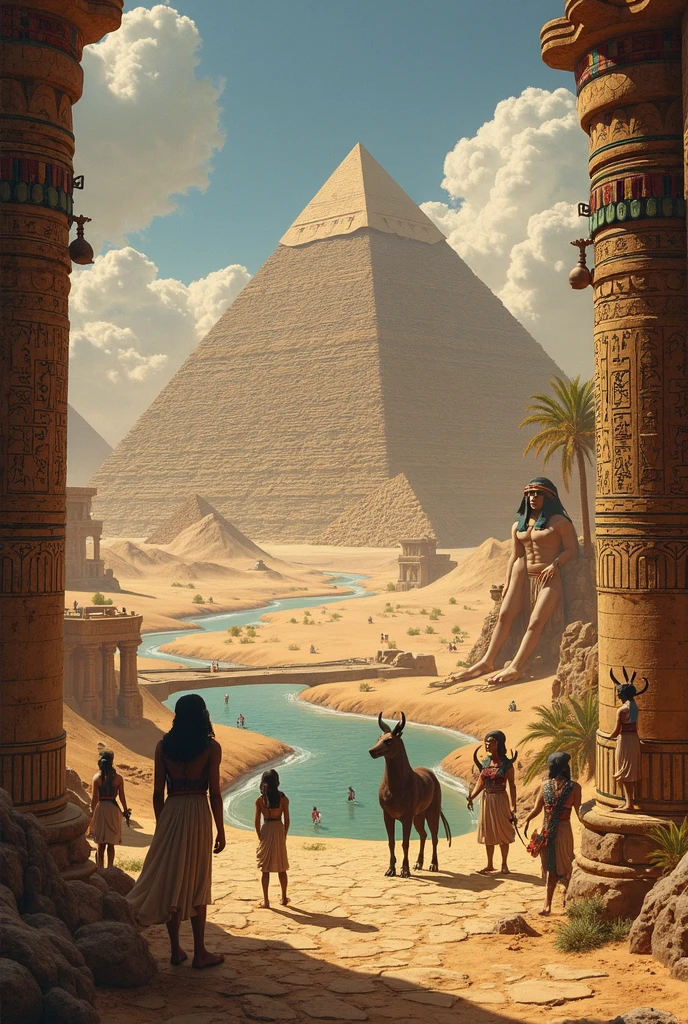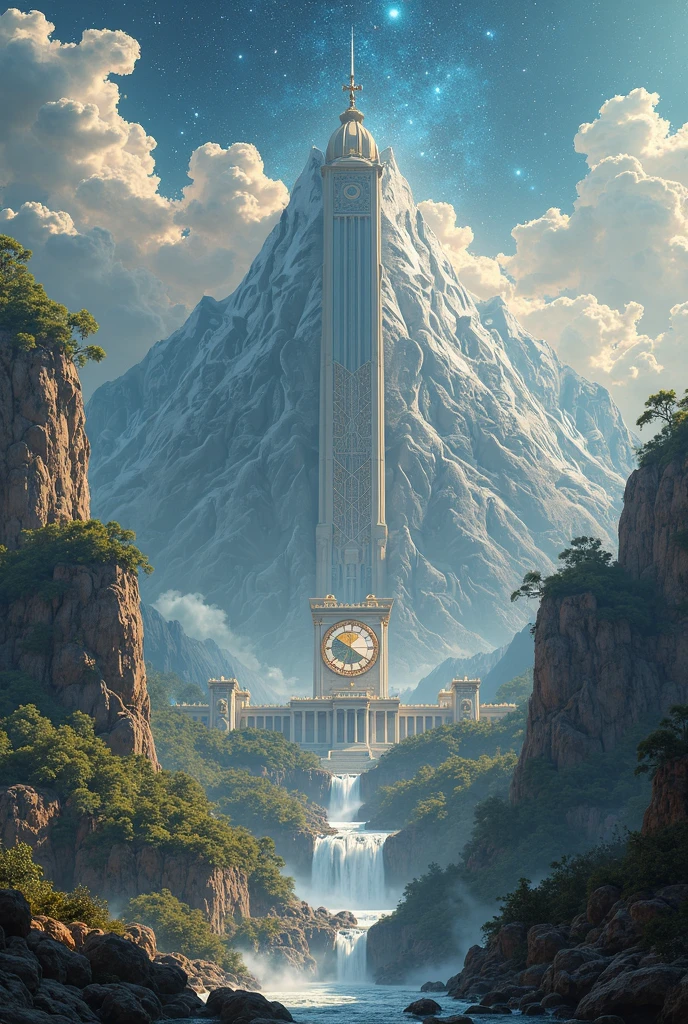Chinese Mythology: A Journey Through Jade, Dragons, and the Heavens
Chinese mythology is a rich tapestry of legends, gods, and cosmic forces that have shaped the culture for millennia. Central to these stories is Jade, a stone revered for its purity and connection to immortality. From the Emperor to the mighty Dragons, and the celestial Feng Huang, these myths reveal a world where the divine and mortal realms intertwine.
The Sacred Role of Jade in Chinese Mythology
In Chinese culture, Jade is more than just a precious stone—it symbolizes virtue, power, and eternal life. Ancient texts describe it as the “Stone of Heaven,” believed to protect its wearer and connect them to the divine. Emperors were often buried in jade suits to ensure safe passage to the afterlife.
- Jade represented moral integrity, often linked to Confucian ideals.
- It was used in rituals to communicate with gods and ancestors.
- The Emperor’s seal was traditionally carved from jade, symbolizing heavenly mandate.
Mythological Creatures Associated with Jade
| Creature | Connection to Jade |
|---|---|
| Dragons | Often depicted holding jade pearls, representing wisdom and power. |
| Feng Huang (Phoenix) | Symbolized with jade ornaments, embodying grace and immortality. |
| Qilin | Believed to appear only in times of peace, often associated with jade artifacts. |
The Celestial Hierarchy: The Emperor and the Heavens
The Emperor was seen as the “Son of Heaven,” ruling with divine authority. Chinese mythology describes a structured cosmos where gods, Immortals, and humans coexisted under the watchful eye of Heaven.
Key Figures in the Heavenly Court
- Jade Emperor (Yu Huang) – The supreme ruler of Heaven, often depicted holding a jade scepter.
- Xi Wangmu (Queen Mother of the West) – Guardian of the peaches of immortality, associated with jade mountains.
- Eight Immortals (Ba Xian) – Legendary beings who achieved eternal life through wisdom and virtue.
Dragons: The Divine Protectors
Unlike Western myths, Chinese Dragons are benevolent beings representing strength, prosperity, and rain. They were closely tied to the Emperor and often depicted with jade scales.
Types of Dragons in Chinese Mythology
| Dragon Type | Role |
|---|---|
| Tianlong (Celestial Dragon) | Protector of the heavens and servant of the Jade Emperor. |
| Shenlong (Spiritual Dragon) | Controls wind and rain, often invoked in agricultural rituals. |
| Fucanglong (Treasure Dragon) | Guardian of underground treasures, including jade deposits. |
Feng Huang: The Mythical Phoenix
The Feng Huang, or Chinese phoenix, symbolizes harmony and renewal. Often paired with the dragon, it represents the balance of yin and yang. Its feathers were said to shimmer like polished Jade.
Symbolism of the Feng Huang
- Represents the Empress, complementing the Emperor’s dragon.
- Appears during times of peace and prosperity.
- Associated with the south and the element of fire.
The Immortals and Their Quest for Eternal Life
Chinese mythology is filled with tales of Immortals who transcended mortal limits. Many sought the elixir of life, often linked to Jade and celestial peaches.
Famous Immortals in Chinese Lore
- Li Tieguai – A healer who carried a gourd of life-giving medicine.
- Zhang Guolao – Known for riding a white donkey backward, symbolizing wisdom.
- He Xiangu – The only female among the Eight Immortals, often holding a lotus flower.
For further reading on Chinese mythology, explore these resources: Encyclopedia Britannica, World History Encyclopedia, and The Met Museum.
Descubre más artículos fascinantes en nuestra web y únete a nuestra comunidad en facebook.com/zatiandrops.
One of the most fundamental stories in Chinese mythology is the tale of Pangu, the primordial giant who shaped the universe. According to legend, Pangu emerged from a cosmic egg, separating Yin (earth) and Yang (heaven) with his axe. His body transformed into mountains, rivers, and stars—a concept mirroring ancient Chinese cosmology.
The Legacy of Pangu in Chinese Culture
Pangu’s sacrifice is celebrated in festivals and art, symbolizing the interconnectedness of all things. His myth also influenced Daoist philosophy, where balance between opposing forces is central.
- Pangu’s breath became the wind and clouds.
- His voice formed thunder, while his sweat turned into rain.
- His bones were said to contain veins of jade, linking him to earthly treasures.
Pangu’s Influence on Later Myths
| Mythological Figure | Connection to Pangu |
|---|---|
| Nuwa | Goddess who repaired Pangu’s heavens using five-colored stones. |
| Fuxi | Taught humanity to harness Pangu’s natural order through divination. |
Chinese mythology depicts a complex underworld ruled by Yanluo Wang (King of Hell). Souls were judged based on their deeds, with punishments or rewards reflecting Confucian and Buddhist ideals.
The Ten Courts of Hell
Each court specialized in judging specific sins, from betrayal to greed. Souls could be reincarnated, purified, or condemned eternally.
- First Court: Judged lifespan discrepancies.
- Third Court: Punished ungrateful children.
- Seventh Court: Dealt with thieves and corrupt officials.
Symbolic Tortures in Chinese Hell
- Mirrors reflecting past sins.
- Mountains of knives for liars.
- Pools of molten jade for those who coveted wealth unjustly.
Beyond gods and immortals, Chinese myths feature mortal heroes whose deeds shaped history. These figures often embodied virtues like filial piety or courage.
The Archer Hou Yi and the Ten Suns
When ten suns scorched the earth, the archer Hou Yi shot down nine, saving humanity. His wife, Chang’e, later became the Moon Goddess after consuming an elixir of immortality—a tale celebrated during the Mid-Autumn Festival.
Key Artifacts in Heroic Myths
| Hero | Sacred Object | Significance |
|---|---|---|
| Hou Yi | Red Bow | Gifted by the Jade Emperor to restore balance. |
| Yu the Great | Jade Tablet | Used to control floods and map rivers. |
Sacred mountains and islands served as bridges between realms. Kunlun Mountain, home to Xi Wangmu, was a paradise where immortals gathered, while Penglai Island floated beyond mortal reach, housing the elixir of life.
Kunlun’s Mythological Layers
- Its peaks touched the Heavenly Court.
- Guarded by qilin and tigers with jade claws.
- Housed the “Peaches of Immortality,” ripening every 3,000 years.
Comparing Mythical Paradises
| Location | Ruler | Key Feature |
|---|---|---|
| Kunlun | Xi Wangmu | Jade pillars supporting the sky |
| Penglai | Eight Immortals | Floating palaces of gold and jade |
While dragons dominate, other creatures held profound meaning. The White Tiger represented the west and military prowess, while the Black Tortoise symbolized longevity and the north.
The Four Auspicious Beasts
These celestial animals guarded cardinal directions and seasons:
- Azure Dragon (East, Spring)
- Vermilion Bird (South, Summer)
- White Tiger (West, Autumn)
- Black Tortoise (North, Winter)
Lesser-Known Mythical Creatures
- Jingwei: A bird determined to fill the sea with pebbles after drowning.
- Taotie: A gluttonous monster symbolizing unchecked desire.
- Bixie: Winged lions carved from jade to ward off evil.
Ancient traditions tied myths to practical customs. Farmers prayed to Shenlong for rain, while scholars honored Wenchang, god of literature, before exams.
Festivals Rooted in Myth
- Dragon Boat Festival: Commemorates Qu Yuan’s suicide, with races to scare water spirits.
- Qixi Festival: Celebrates the annual meeting of the Weaver Girl and Cowherd stars.
- Lantern Festival: Marks the last day of Lunar New Year, lighting lanterns to guide lost spirits.
Modern Adaptations of Myths
From Buddhist parables to wuxia novels, these stories evolve. Even today, jade pendants shaped like mythical creatures are worn for protection, blending ancient beliefs with contemporary life.
Descubre más artículos fascinantes en nuestra web y únete a nuestra comunidad en facebook.com/zatiandrops.
The Cosmic Weaver: The Legend of the Cowherd and the Weaver Girl
One of China’s most beloved love stories is the celestial romance between Niulang (Cowherd) and Zhinü (Weaver Girl), represented by the stars Altair and Vega. Separated by the Jade Emperor, they are allowed to meet only once a year on the seventh day of the seventh lunar month, forming a bridge of magpies across the Milky Way.
Symbolism in the Tale
- The Weaver Girl’s loom symbolizes the passage of time and fate.
- The Cowherd’s ox, gifted with speech, represents loyalty and wisdom.
- Their reunion inspires the Qixi Festival, often called Chinese Valentine’s Day.
| Element | Mythological Meaning |
|---|---|
| Magpie Bridge | Temporary unity of opposing forces (Yin-Yang) |
| Silk Threads | Connections between heaven and earth |
The Great Flood and Yu the Great
Before China’s first dynasties, a catastrophic flood threatened civilization. Yu the Great, wielding a jade-handled axe, spent 13 years redirecting rivers—a feat marking the dawn of hydraulic engineering. Unlike his father, who failed by trying to block waters, Yu succeeded by channeling them, embodying Daoist adaptability.
Yu’s Legacy
- Founded the Xia Dynasty (c. 2070–1600 BCE).
- Introduced the concept of Nine Provinces, dividing China geographically.
- His footprints were said to contain sacred jade dust.
Mythological Plants and Their Powers
Flora in Chinese myths often held divine properties. The Fusang Tree, for instance, was a cosmic mulberry where the ten suns perched before Hou Yi intervened. Other legendary plants include:
- Peaches of Immortality: Grown in Xi Wangmu’s orchard, ripening every 3,000 years.
- Silk Grass: Used by Nuwa to create humans from clay.
- Jade Bamboo: Said to grow in Penglai, its hollow stems containing celestial music.
Plants in Rituals
| Plant | Ritual Use |
|---|---|
| Mugwort | Warded off evil during Dragon Boat Festival |
| Lotus | Symbolized purity in Buddhist and Daoist ceremonies |
The Three Sovereigns and Five Emperors
These semi-mythical rulers laid China’s cultural foundations. The Three Sovereigns—Fuxi, Nuwa, and Shennong—taught humanity fire, marriage, and agriculture. The Five Emperors, including the Yellow Emperor (Huangdi), introduced writing, medicine, and statecraft.
Contributions of the Yellow Emperor
- Invented the compass using jade lodestones.
- Defeated the rebel deity Chiyou with a dragon-shaped army.
- His wife, Leizu, discovered silk when a cocoon fell into her tea.
Astronomy and Mythology: The Celestial Bureaucracy
Ancient Chinese astronomers mapped the heavens as a mirror of imperial government. Stars were deities overseeing human affairs—a concept later formalized as the Celestial Bureaucracy.
- Ziwei Star (Polaris): Throne of the Jade Emperor.
- Big Dipper: Seven judges determining lifespans.
- Weaving Maid Star (Vega): Zhinü’s eternal loom.
Constellations in Myths
| Star Group | Mythological Role |
|---|---|
| Azure Dragon | Spring constellations governing growth |
| White Tiger | Autumn stars associated with war |
Alchemy and the Quest for Immortality
Daoist adepts sought eternal life through waidan (external alchemy) and neidan (internal cultivation). Legends speak of cinnabar elixirs, jade powders, and breathing techniques to refine the body into an immortal vessel.
Famous Alchemical Texts
- Baopuzi: Describes transforming mercury into “gold” for longevity.
- Zhouyi Cantong Qi: Links alchemy to the I Ching’s hexagrams.
- Jade Box Scriptures: Secret manuals said to be hidden in Kunlun Mountain.
For deeper insights, explore Daoist Studies, Asian Art Museum, or History Channel’s China Section.
Descubre más artículos fascinantes en nuestra web y únete a nuestra comunidad en facebook.com/zatiandrops.
The Moon Goddess Chang’e and the Jade Rabbit
The legend of Chang’e, the Moon Goddess, is intricately tied to the Jade Rabbit (Yutu). According to myth, after consuming the elixir of immortality meant for her husband Hou Yi, Chang’e ascended to the moon, where she was joined by a rabbit pounding the elixir in a jade mortar. This celestial duo became central to Mid-Autumn Festival celebrations.
Symbols of the Moon Palace
- The Cassia Tree: Never withers, symbolizing eternal life
- Jade Mortar and Pestle: Tools used by the rabbit to prepare immortality drugs
- The Three-Legged Toad: Represents lunar yin energy
| Moon Symbol | Cultural Significance |
|---|---|
| Chang’e | Embodies feminine grace and solitude |
| Jade Rabbit | Represents diligence and healing |
The Four Perils: Malevolent Forces in Chinese Mythology
While many creatures brought blessings, the Four Perils represented chaos and destruction. These beings were often defeated by legendary heroes or gods to restore balance.
- Taowu: A beast of ignorance that devoured truth-tellers
- Qiongqi: Winged tiger that encouraged evil and punished good
- Taotie: Gluttonous monster that consumed everything
- Hundun: Formless chaos entity representing primordial disorder
Heroes Who Vanquished the Perils
| Peril | Defeated By | Method |
|---|---|---|
| Taowu | Yellow Emperor | Trapped in a jade prison |
| Qiongqi | Zhong Kui | Banished with a peachwood sword |
Mythological Weapons and Sacred Objects
Chinese myths feature powerful artifacts, many crafted from jade or celestial materials. These objects often determined the outcome of cosmic battles.
- Xuanyuan Sword: The Yellow Emperor’s weapon that could command the elements
- Ruyi Scepter: Jade ornament granting wishes and authority
- Heavenly Mirror: Revealed true forms of shapeshifters
- Dragon-Pearl: Source of a dragon’s power, often depicted as jade
Legendary Weapons and Their Owners
| Weapon | Owner | Power |
|---|---|---|
| Red Dragon Crescent Blade | Guan Yu | Could split mountains |
| Jade Emperor’s Seal | Yu Huang | Controlled heavenly decrees |
The Creation of Humans: Nuwa’s Clay Figures
The goddess Nuwa fashioned humans from yellow clay, breathing life into them. As she grew tired, she dragged a rope through mud, creating common people while her handcrafted figures became nobles. This myth explains social hierarchy in ancient China.
Nuwa’s Other Contributions
- Repaired the sky with five-colored stones after a cosmic disaster
- Established marriage rituals
- Created the first musical instrument from bamboo and jade pipes
Water Deities and River Spirits
China’s vast river systems spawned numerous water deities. The Dragon Kings ruled the four seas, while local river gods controlled tributaries. These beings demanded respect and offerings to prevent floods.
- Gonggong: Rampaging water god who caused the great flood
- Mazu: Goddess who protected sailors and fishermen
- River Earls: Local spirits who accepted jade offerings
Water Deity Attributes
| Deity | Domain | Symbol |
|---|---|---|
| Dragon King of the East | East China Sea | Pearl of wisdom |
| Xiang River Goddesses | Xiang River | Jade pendants |
Star-Crossed Lovers: The Butterfly Lovers
The tragic romance of Liang Shanbo and Zhu Yingtai, known as China’s Romeo and Juliet, features mythological elements. After death, they transformed into butterflies – a symbol of eternal love in Chinese culture.
Mythological Motifs in the Tale
- Zhu Yingtai’s disguise as a scholar reflects gender transformation myths
- Their graves opening during a thunderstorm shows celestial intervention
- The butterfly motif connects to Zhuangzi’s philosophical paradox
For further exploration of these rich traditions, visit China Highlights, Ancient Origins, or The China Guide.
Descubre más artículos fascinantes en nuestra web y únete a nuestra comunidad en facebook.com/zatiandrops.


